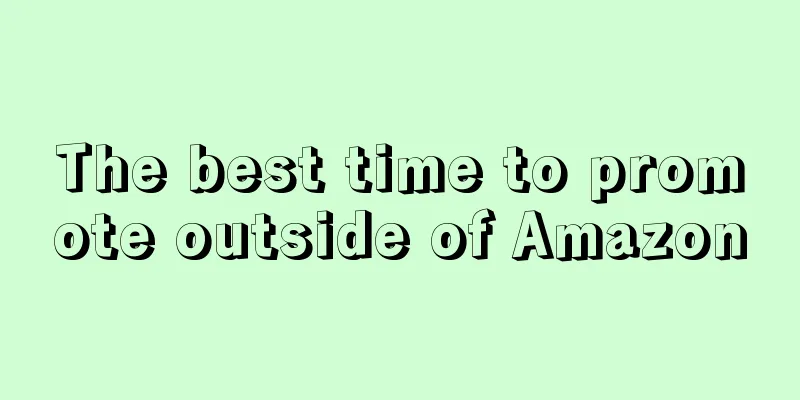There are only two purposes for doing off-site deals: clearing inventory and attracting traffic.
Two years ago, how much did a bid for an ad on Amazon's homepage cost? Now it costs several US dollars to get on the homepage.
On the other hand, some off-site traffic may seem free, but in fact it costs more than paid traffic.
Some sellers will say that they have cultivated an SNS account with over a million fans, so that they have the so-called "free off-site". However, they do not know that it also costs a lot to cultivate such an account.
Is your off-site deal losing money or making money?
There are only two purposes for doing off-site deals: clearing inventory and attracting traffic.
Needless to say, the prices for clearing inventory are basically very low. However, for off-site deals that are intended to attract traffic, the ideal model is to improve the ranking of the listing through off-site deals. Once the ranking rises, the number of orders will naturally increase, thereby covering the cost of the off-site deals.
Ideals are full, but reality is always skinny. Many sellers have invested a lot of money and energy in developing off-site products. Sales have increased, but analyzing the overall data, the conversion rate is average. What’s even more sad is that the subsequent sales volume was even pitifully low.
How can we improve the conversion rate of traffic?
Traffic comes in, but there is no good conversion rate - lower than the normal level of industry category conversion rate, or lower than the reasonable target line you set. The reasons are as follows:
1. Inaccurate traffic
These include using overly broad keywords, too few keywords, and poor keyword matching.
2. Poor product listing quality
The first picture is of poor quality and cannot express the product well or make buyers want to click on it.
The pictures do not attract buyers, for example, they do not pay attention to the clarity of the pictures. According to research, solving the problem of picture clarity can help increase sales by 15-20%;
The title is not eye-catching.
The combination and arrangement of title words are inappropriate;
The product highlights or specification features are not described in detail or are inappropriate;
The product description is complicated, for example, the buyer cannot understand the unit conversion on the product;
The historical review is bad, including Helpful disadvantages.
3. The product is relatively weak among competing products in the same category
For example:
More products of the same category and different brands are displayed under the product listing, and the herd effect of brand recommendation affects buyers' purchasing awareness;
The images and text of competing products are better;
Competing products have more and better reviews;
The price or logistics of competing products are more advantageous.
Traffic is getting more and more expensive, the best time to do off-site promotion
If a product has few reviews and sales in the early stages, it is a waste of effort to do off-site marketing.
How many reviews, sales, and rankings does a product need to accumulate to be suitable for off-site promotion without wasting money?
1. Achieve a high level of traffic within the site: Use the traffic of Best Seller products in the same category as a reference, but do not mean to achieve the traffic level of Best Seller products;
2. The conversion rate of product listing is higher than that of major competitors;
3. The ACOS level of hot words with PPC exceeding 80% of the products remains high;
4. The overall rating of the product remains good, with basically no after-sales quality issues.
5. Try to use various feasible display methods on the site, especially those for competing products.
If you start working outside the site, you must pay attention to the conversion rate!

